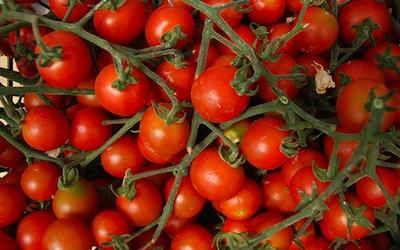- Economics
- Law & Policy
- Civil Rights & Race
- Health Care
The critics of genetic engineering in agriculture—also known as “genetic modification” (GM) or gene-splicing—for decades have relied upon and promulgated The Big Lie: that food from genetically engineered crops is untested, unsafe, unwanted, and unneeded. All of these assertions, made by radical anti-technology organizations such as the National Resources Defense Council (NRDC), Environmental Defense, the Center for Science in the Public Interest, the Center for Food Safety, the Union of Concerned Scientists, and Greenpeace are demonstrably false.
The benefits of genetically engineered crops are proven. According to the International Service for the Acquisition of Agri-Biotech Applications, from 1996 to 2010, the use of modern genetic engineering technology increased crop production and value by $78 billion; it obviated the need to apply of 443 million kg of pesticide active ingredients to crops; in 2010 alone, it reduced CO2 emissions by 19 billion kg, the equivalent of taking approximately 9 million cars off the road; it conserved biodiversity by saving 91 million hectares of land; and it helped alleviate poverty by increasing the agricultural productivity and food security of 15 million small farmers who are some of the poorest people in the world.
 Tomatoes from an organic farm in Cyprus (photo credit: George M. Groutas).
Tomatoes from an organic farm in Cyprus (photo credit: George M. Groutas).
Are genetically engineered products safe? There is a long-standing consensus in the scientific community that the newer techniques of genetic engineering are essentially an extension, or refinement, of earlier methods for genetic improvement. As long ago as 1989, a National Research Council analysis concluded, “Crops modified by molecular and cellular methods should pose risks no different from those modified by classical genetic methods for similar traits. As the molecular methods are more specific, users of these methods will be more certain about the traits they introduce into the plants.”
And according to the Society of Toxicology, “There is no reason to suppose that the process of food production through biotechnology leads to risks of a different nature than those…created by conventional breeding.”
Even the notoriously risk-averse FDA “is not aware of any information showing that foods derived by these new methods (plant biotechnology) differ from other foods in any meaningful or uniform way, or that, as a class, foods developed by the new techniques present different or greater safety concern than foods developed by traditional plant breeding.” For that reason, the FDA does not discriminate against genetic engineering techniques; rather, the degree of regulatory scrutiny depends on factors related to risk, such as whether a new food contains a substance completely new to the food supply or has higher levels of an endogenous toxin.
When the naysayers remonstrate that genetically engineered foods have not been proven safe for human consumption, they are ignoring that to ensure their safety, all genetically engineered crops are extensively tested for toxins, allergens, and nutritional value before being marketed. In fact, as a group, they are the most-tested food products sold today. Conventionally bred crops and varieties, in contrast, undergo no systematic testing for safety or nutritional value.
The antagonists of genetic engineering frequently object to the absence of human feeding studies of genetically engineered plants, but that claim is a red herring. The safety of any new genetically engineered crop is carefully tested in the laboratory, in the field, and in animals. It is impossible to design a meaningful long-term feeding test in humans, however. Such testing would require the intake of large amounts of a particular genetically engineered food or ingredient over a significant portion of the human life span. Who would be willing to consume, for decades, a fully standardized diet (essential for comparing groups and isolating the effects of the food under study) that is, say, 30 percent soybeans or 30 percent corn? There is simply no practical way to learn anything from human studies of whole foods.
This is why no existing food or food ingredient—conventional or genetically engineered—has been subjected to this type of testing. Academic toxicologists and food safety officials around the world agree that long-term feeding tests in humans are not only virtually impossible to perform but are not necessary to establish safety.
Since 1996, there has also been an outpouring of scientific evidence and published peer-reviewed research that provides strong evidence in support of the safety of genetically engineered crops and the foods made from them. During those 16 years, there has been no credible scientific evidence that genetically engineered foods or ingredients cause allergies or that they have any negative long-term health effects. Several trillion meals containing genetically engineered food ingredients have been consumed by people around the world, and not a single adverse effect has been documented.
Organic Food: Environmentally Irresponsible
Having raised unsubstantiated fears about the adequacy of the testing of genetically engineered foods, opponents of this technology then stray far into the weeds and urge that, because foods containing genetically engineered ingredients need not be labeled as such, consumers should avoid genetic engineering by going organic. (Organic standards do not permit the use of modern genetic engineering technology.) That’s bad advice for all sorts of reasons.
For a start, organic foods are, if anything, less safe than those made with other production systems, and they are environmentally irresponsible. Although federal organic regulations limit pesticide use, restrict certain kinds of animal feed, forbid several common agricultural practices, and require health inspections, organic certification has absolutely nothing to do with the safety or the characteristics of the food itself. Then what does “organic” mean? Simply, that the United States Department of Agriculture (USDA) has established a set of process-based national standards that must be met for a food to be labeled “organic.”
The USDA is very clear about what organic can and can’t promise: “The USDA makes no claims that organically produced food is safer or more nutritious than conventionally produced food. Organic food differs from conventionally produced food in the way it is grown, handled, and processed.” The common claim that organic food is superior in regards to nutritional value or safety is based more on specious assumptions and wishful thinking (and often, economic advantage) than on actual evidence. As to “sustainability” (a vague concept that is difficult to quantify), because the yields from organic production are generally lower, organic production is wasteful of farmland and water—in other words, less sustainable.
How safe is organic food? There have been numerous organic food recalls, including at least 20 during the past two years. Examples include Salmonella contamination of Andrew Williamson Fresh Produce organic grape tomatoes and Starwest Botanicals organic celery seed; and the USDA recalled 34,000 pounds of organic beef in December 2011 for E. coli contamination. During the summer of 2011, more than 3,000 people were sickened and at least 50 died from consuming E. coli–tainted organic bean sprouts in Europe. Organic does not imply safer.
Anti-genetic engineering activists have often achieved by intimidation what they could not accomplish by persuasion. In 1999, the Gerber foods company succumbed to activist pressure, announcing that its baby food products would no longer contain any genetically engineered ingredients. Indeed, Gerber went farther and promised it would attempt to shift to organic ingredients that are grown without synthetic pesticides or fertilizers. Because cornstarch and corn sweeteners are often used in a range of foods, this could mean new formulas for Gerber’s entire product line.
Similarly, the Japanese brewer Kirin and the Danish brewer Carlsberg eliminated genetically engineered ingredients from their beers. In the United States, the fast-food giant McDonald's banned them from its menu; and Frito-Lay demanded that its growers stop planting corn engineered to contain a bacterial protein that confers resistance to insect predation. Thus, these companies categorically ignored the possibility—actually, the likelihood—that conventional products may at times be nutritionally inferior or less safe than those made from genetically engineered plants (vide infra).
Ideology and Emotion Trump Science
The issues driving such decisions are ideological and emotional—and, for a company, perhaps economic—but not scientific. As discussed above, the scientific consensus holds that the risks associated with genetically engineered products are fundamentally the same in kind as for other products. Dozens of new plant varieties improved with traditional techniques of genetic modification such as hybridization and radiation mutagenesis enter the marketplace each year without premarket review or special labeling. Many products on the market are from “wide crosses,” hybridizations in which genes are moved from one species to another to create a plant variety that does not and cannot exist in nature.
While this may sound dramatic, the results are as mundane as a tomato that is more resistant to disease or that has a thicker skin that won't be damaged during mechanical picking. Plants that have undergone these slight but important alterations have been an integral part of American diets for decades; they are at the farm stand and supermarket—and in baby food.
Genetic engineering enhances product safety not only by its greater precision, but by exploiting the subtleties of plant pathology. A good example is Bt corn, crafted by incorporating into the plant a bacterial gene that codes for a protein toxic to certain corn insect pests. As it fends off the insect pests, the genetically engineered corn also reduces the levels of Fusarium, a toxic fungus often carried into the plants by the insects.
This, in turn, reduces the levels of fumonisin (a mycotoxin), a potent and dangerous fungal toxin that can lead to fatal diseases in horses and swine that ingest infected corn. The toxin also causes esophageal cancer and birth defects in humans. Using the genetically engineered corn for food processing lowers the probability that harmful levels of fumonisin will be found in the final product, which enhances food safety.
Regulatory agencies such as the US Food and Drug Administration and UK Food Safety Agency are acutely aware of the dangers of mycotoxins and have established recommended maximum fumonisin levels in food and feed products made from corn. In 2003, the UK Food Safety Agency tested six organic corn meal products and 20 conventional corn meal products for fumonisin contamination. All six organic corn meals had elevated levels—from nine to forty times greater than the recommended levels for human health—and they were voluntarily withdrawn from grocery stores.
The harsh reality is that only because anti-biotechnology extremists have demanded it, numerous companies have committed to forgoing genetically improved food sources that could yield healthier and safer products. Thus, a company that systematically rejects genetically engineered grains in favor of conventional ones—and especially, in favor of organic ones—may risk liability from selling products that contain, in legal terms, a manufacturing or design defect.
The bottom line is that genetic engineering has been proven to be safe and useful. Instead of capitulating to activists’ demands to reject it, companies should promise their customers loudly and repeatedly that they are committed to using the best technologies available to produce safe products that offer good value to consumers—and follow through on that promise.
















